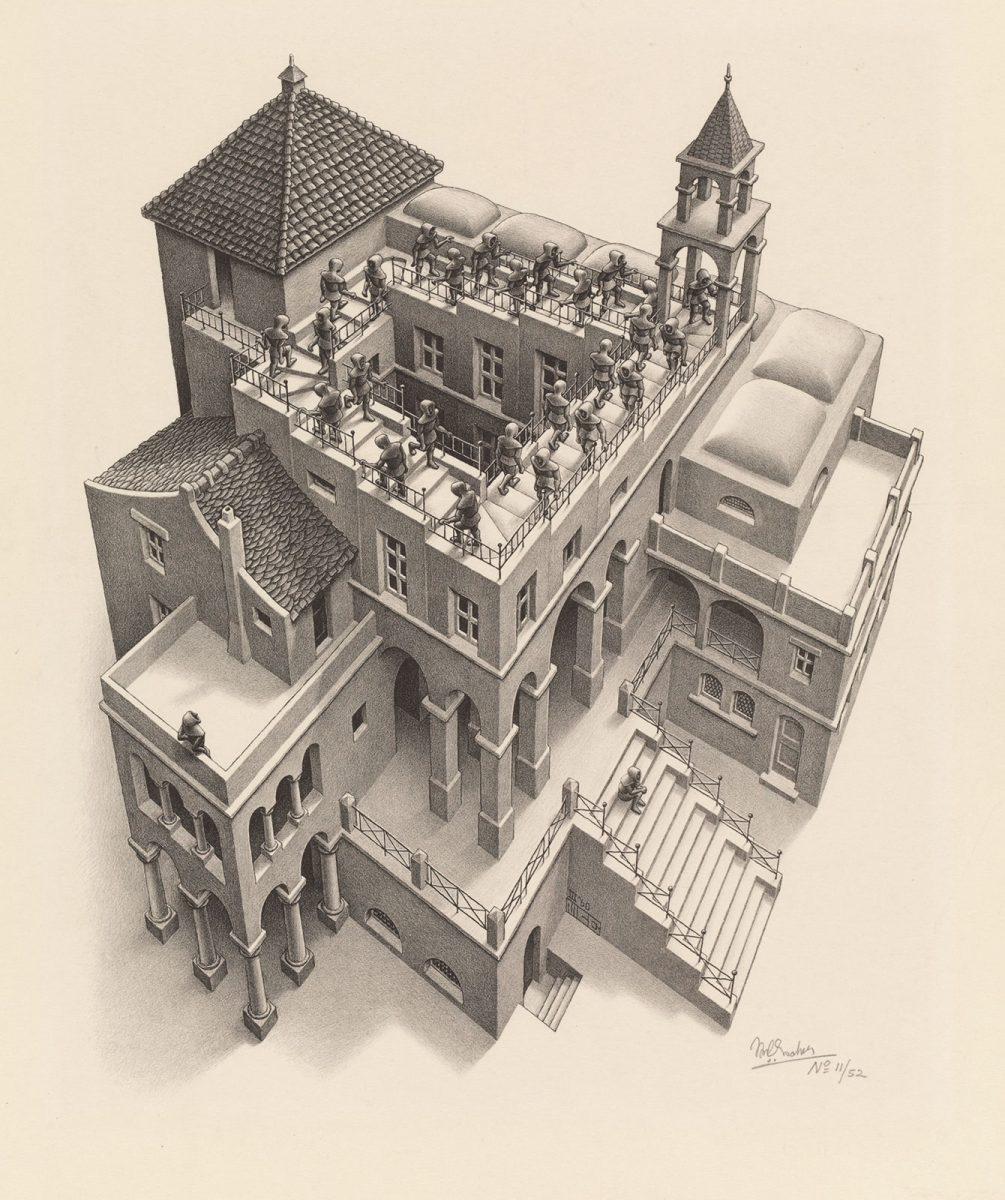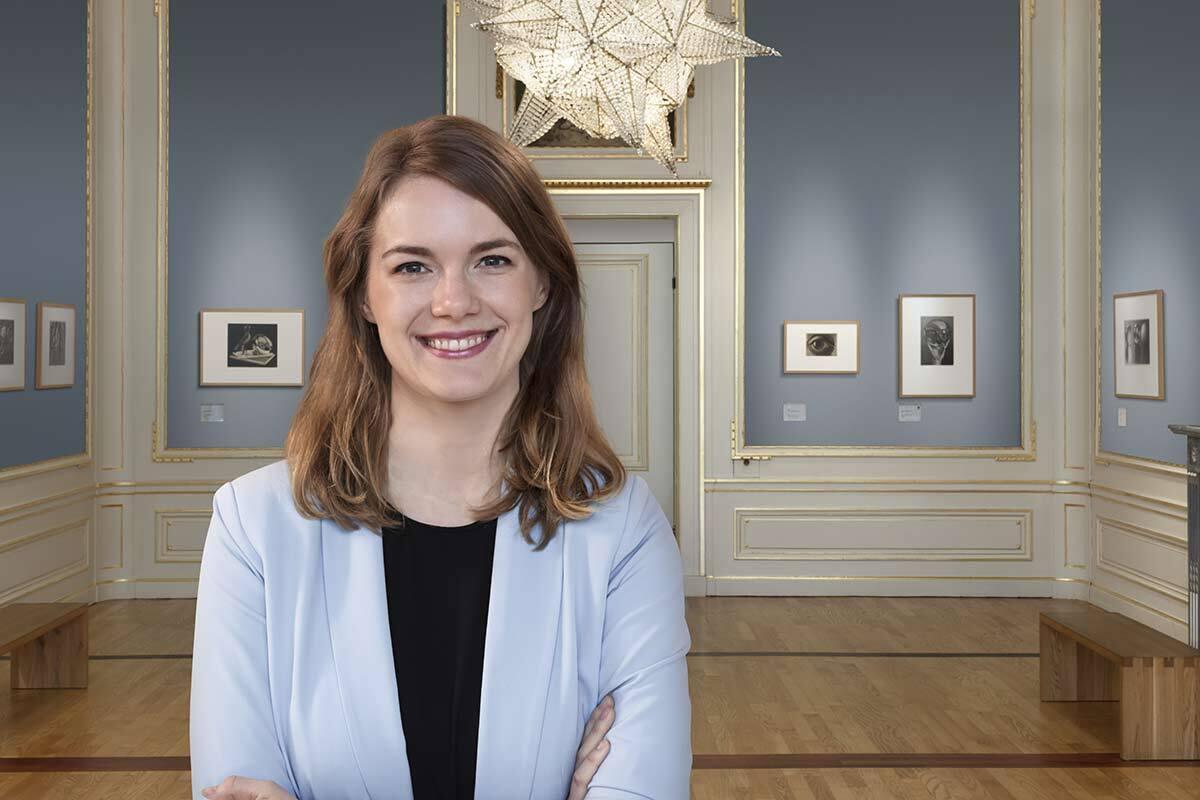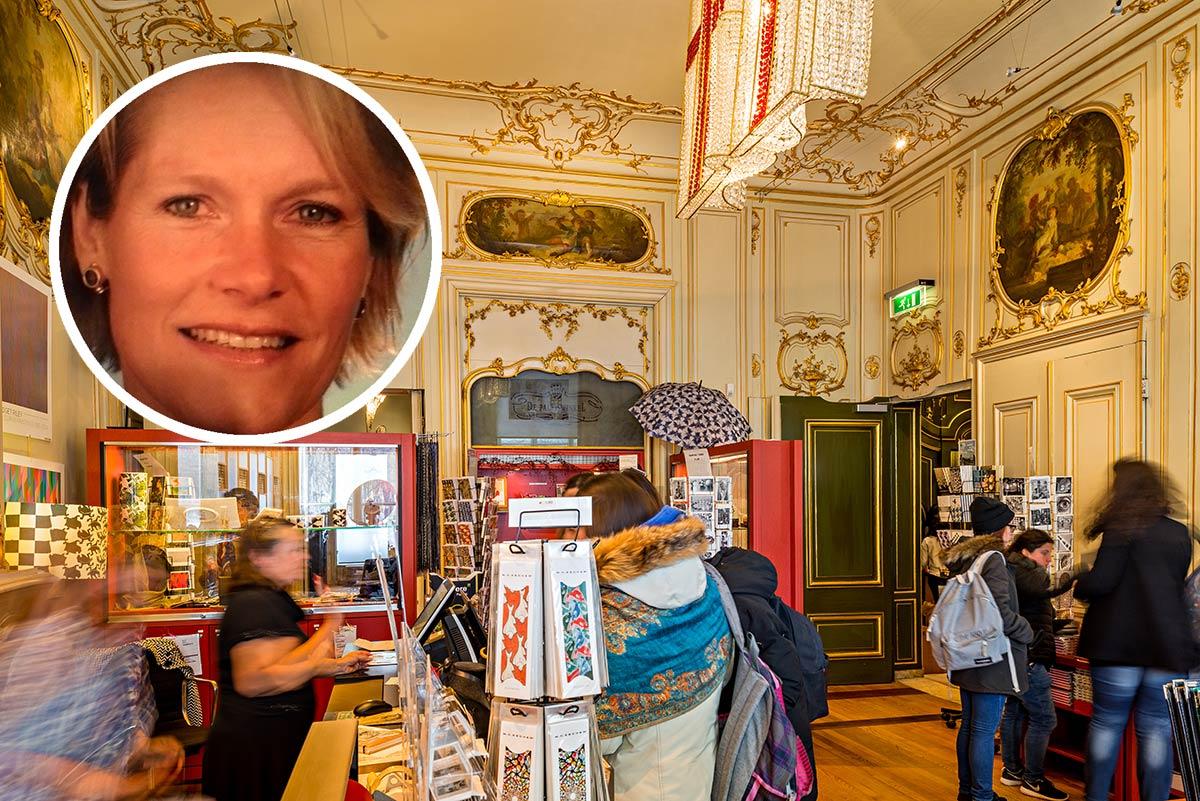
A lot has changed in the world since the corona crisis. This is also the case at Escher in The Palace. Our colleagues are happy to tell you about these new times in the museum and their own function in our Co-worker Monday.

Museum educator Özgür Savas
What exactly do you do at Escher in The Palace?
I am one of the museum educators. I provide museum lessons for primary and secondary education and give guided tours. I also teach two different workshops. On Sundays I teach the linoleum workshop and every Wednesday of the school holidays the tessellation workshop. These are always received with great enthusiasm, by both children and adults.
What is your favourite Escher artwork?
Well, first of all, I don’t have an ultimate favourite. There are so many works by Escher that I love. Ascending and Descending (1960) is of course fascinating because of the paradox, but what I find so special from the perspective of my position as a museum educator are the two monks who aren’t walking on the stairs. Their attitude is very different from each other. One monk looks upwards towards the monks who are endlessly ascending and descending the stairs. He has a question mark over his head, as it were. The other figure is looking nonchalantly straight ahead. He will never find the answer to the paradox. Of course, we will never know whether Escher really intended it that way. Yet I always try to tell the students that a curious, open mindset, like that of the monk looking up, ensures that you can learn and discover many new things.

M.C. Escher, Klimmen en dalen, litho, maart 1960
What do you enjoy most about your job?
When I notice that one of my lessons has affected someone in a positive sense. I see that in the reactions of both the children and adults. Especially the pride they take in their own work and in what they discover in the prints which they hadn’t previously discovered. In addition, I also really enjoy the fact that we have such a professional team, which is why we are able to offer so many special lessons and tours for many different target groups. Such as the guided tour of tactile objects which we offer for blind and visually impaired visitors. I also love the project I’m working on now. It is a collaboration with Het Nationale Theater (the national theatre company) which combines philosophy, visual arts and theatre in a museum lesson.
How do children react to Escher’s work? What are your favourite reactions?
Every child is unique and reacts differently. Yet there is almost always a moment of discovery and wonder when they see things they didn’t see before. That’s really great. There are also so many paradoxes in Escher’s work. His work really inspires wonder at the world. In this day and age, we are not used to looking at anything for a long time, so I always try to encourage visitors to look and think about it longer. I also hear many children say things like, ‘sir, I thought this was really cool’, or ‘this museum is fun’. Sometimes children (and adults) don’t like museums because they are worried they’ll find them unfamiliar or hard to comprehend. In my museum lesson I often refer to computer games, such as Mario, Zelda and Minecraft, to explain how Escher’s work is constructed. By connecting his art with something familiar and comprehensible to them, I can get an instant click.
What is your favourite memory of your work at Escher in The Palace?
My memories mainly centre on people’s reactions. For example, it is very special when you see people who at first sit there with a piece of paper and a pencil in front of them without knowing what to make and then being proud of what they've managed to create at the end of the workshop. Escher’s work is interesting both to creative types and logical types, and he’s unique in connecting these spheres. Through his tessellations, for instance. They are quite technical, but to see an animal in them you’ll need to resort to using your imagination. Children can always do that very quickly, while most adults find it quite difficult. They put up a mental barrier because they’re afraid of being wrong about what they’re seeing. Escher once said that if you draw an eye on something it becomes an animal. He always kept his playful imagination and I try to convey that to the adults as well.
What do you hope the participants in your guided tours / museum lessons will take home with them?
I love both science and art. I really think creativity is an undervalued asset in our society. To be groundbreaking at what you do, in any field, you need creativity. To see and approach things in a different way, which isn’t always the easiest thing to do. If you look up the big names in art and science, you often see that they had to go against the grain. Fortunately, there have been heroes who dared to do so and who had the creativity to think outside the box. Escher was one of them, and I hope that both children and adults can be inspired by him and dare to look at the world differently.





